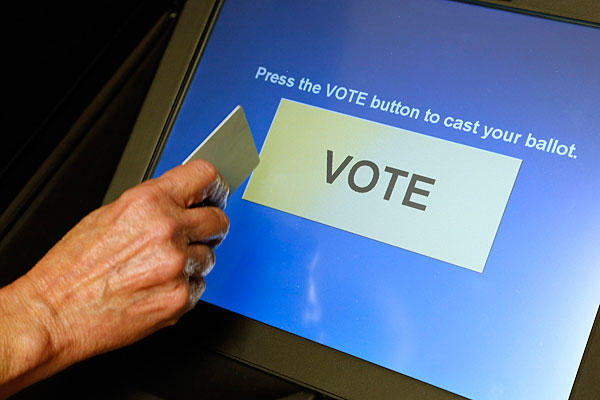E-democracy, or electronic democracy, is promoting democracy while integrating technology at the same time. While this type of democracy is safer, more transparent, and secure, it also has environmental benefits. So what if Lebanon adopted e-voting in its elections? What will change then?
It is known that 1 tree makes 16.67 reams of copy paper, so imagine how many trees are cut to provide papers for millions of voters. Of course, there are sustainable forests, and there are some kinds of trees that grow faster than others and are not really harmed when used by humans, such as the bamboo trees, which grow on a large area of land, spread widely, and grow fast.
However, these sustainable forests are not really used on a wide scale, and making papers out of trees is not a big concern in many places. In Lebanon, for example, we rarely hear anyone complaining about “trees being cut to make papers”. It is probably an issue for sarcasm.
Estonia… Legally Binding General E- Elections
Many countries have adopted electronic voting. This type of voting began in Estonia in October 2005 local elections when Estonia became the first country to have legally binding general elections using the Internet as a means of casting the vote and was declared a success by the Estonian election officials.
In 2005, Estonia became the first country to offer Internet voting nationally in local elections. 9,317 people voted online.
In 2007, Estonia held its and the world’s first National Internet election. Voting was available from February 26 to 28. A total of 30,275 citizens used Internet voting.
In the 2009 local municipal elections, 104,415 people voted over the Internet. This means that roughly 9,5% of the persons with the right to vote gave their vote over the Internet.
In the 2011 parliamentary elections, between 24 February and March 2, 140,846 people cast their votes online. 96% of the electronic votes were cast in Estonia and 4% by Estonian citizens residing in 106 foreign countries.
In the 2014 European Parliament elections 31.3% of all participating voters gave their vote over the Internet.
Used in Belgium since 1991
In Belgium, electronic voting started in 1991. It is widely used in Belgium for general and municipal elections and has been since 1999. Electronic voting in Belgium has been based on two systems known as Jites and Digivote.
Both of these have been characterized as “indirect recording electronic voting systems” because the voting machine does not directly record and tabulate the vote, but instead, serves as a ballot marking device.
Both the Jites and Digivote systems record ballots on cardboard magnetic stripe cards. Voters deposit their voted ballots into a ballot box that incorporates a magnetic stripe reader to tabulate the vote. In the event of a controversy, the cards can be recounted by machine.
E-Voting… What will it add?
E-voting is not only an eco-friendly choice, but it also promotes more transparent results. Speed is also a main feature in electronic voting, and probably many people reading this will start considering campaigning for e-voting just because of this feature. In Lebanon, for example, the final results of the first day of municipal elections in 2016, were not given until the day after the elections. Everyone was posting status on social media, showing their anger over this matter.
Transparency is another feature of these elections. While many people worry about complete transparency in counting votes, or are suspicious about results being adjusted, e-voting will solve all that, because the counting is done electronically.
E-voting in Lebanon
“greenarea.info” contacted Gloria Abdo from the Student Affairs office at “Universite Saint Joseph” (USJ) in Lebanon, to know more how electronic voting is done at the University.
Abdo informed us that “the University has adopted e-voting 4 years ago, aiming at promoting democracy online”. The reasons for adopting e-voting at USJ, besides promoting online democracy, she says, are that “e-voting is a faster procedure than traditional voting, and it is also secure”.
However, the University has a double-security system, and that is why the final result is printed on an envelope to put in a box. All the options are provided on the screen to choose from, so the procedure is very easy for everyone.
We also talked to a number of students at the University, who told us that they “found the process was a lot easier than the process they already tried at other elections”.
Verena al Amil (20 years old), for example, saw that electronic voting was more secure, but at the same time, she was afraid that “a hacker would hack the system and know what each student voted, because the students vote in order”.
Let us hope that Lebanon will adopt e-voting, for all of the mentioned reasons. Democracy and environment affect our daily lives, and the first can be more promoted by thinking of Eco-friendlier ways.











